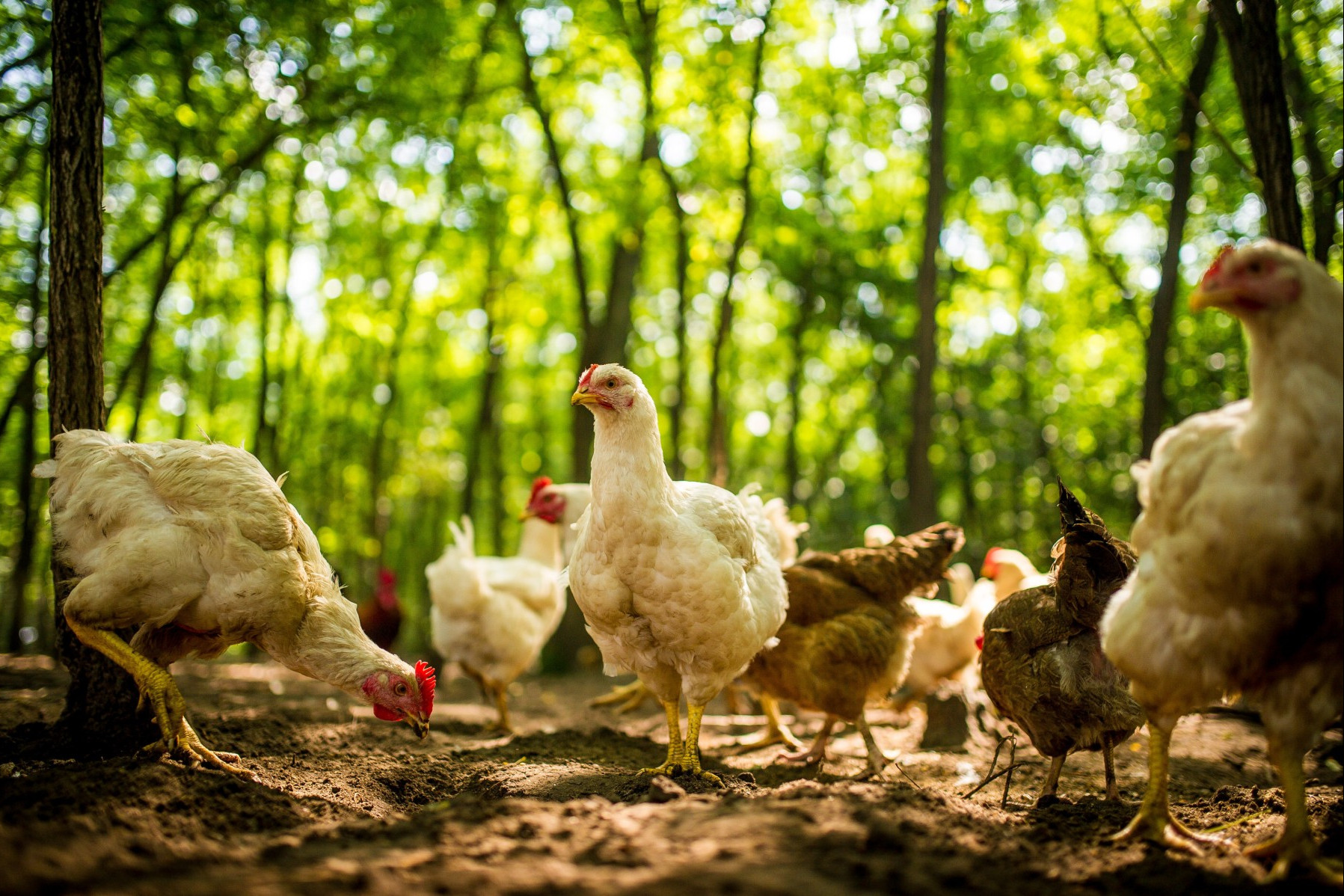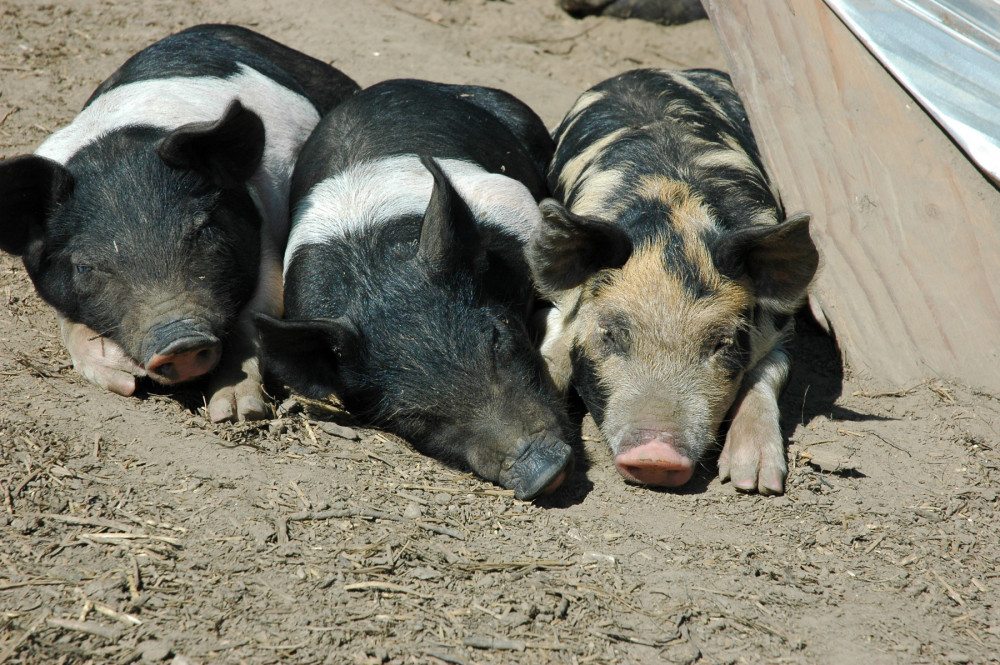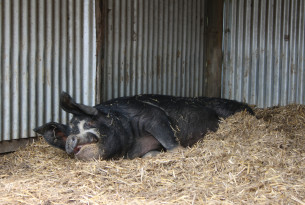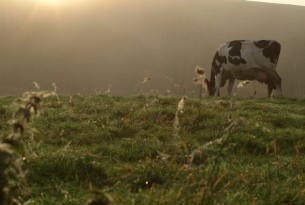
What is the difference between animal rights and animal welfare?
The terms “animal rights” and “animal welfare” are often used interchangeably, however, they represent different concepts.
What is animal welfare?
Animal welfare refers to an animal’s quality of life, which is usually determined by how well an animal is coping with their environment. It is rooted in the rationale that animals are sentient beings, have agency over their own lives, and that consideration should be given to their well-being, especially when they are under our care.
There are different ways to measure the success or failure of animal welfare including the Five Freedoms framework, and the Five Domains model.
Using either framework, animal welfare advocates and scientists can measure and improve an animal’s quality of life. As you can imagine, a factory farm does poorly when measured by these standards, whereas a high-welfare farm that allows animals to roam freely does better.

Young pigs relaxing outdoors at a high animal welfare farm
What are animal rights?
The concept of “animal rights” is equally as complex and multi-faceted as the concept of “animal welfare”. While there are many definitions and views, the main theme of animal rights philosophy is that many or all sentient animals have moral worth independent of their utility to humans. Because of their inherent worth, animals should be afforded fundamental rights, including the right to life. It is therefore unethical to kill an animal for any reason except in extreme cases such as self-protection.
Proponents of animal rights tend to support “animal liberation” - the view that animals should not be “owned” by humans. Animal rights assert that animals exist for their own purposes, and humans cannot and should not use animals for humans ends – such as for animal agriculture, food, fashion, entertainment, scientific experiments, or as pets.
What's the difference between animal rights and animal welfare?
Animal welfare and animal rights differ based on one key aspect: Animal welfare is a scientific approach to our relationship with animals, whereas animal rights is a philosophical approach.
Animal rights philosophy is based on the idea that animals should not be used by people for any reason, and that animal rights should protect their interests the way human rights protect people.
Animal welfare, on the other hand, is a set of practices designed to govern the treatment of animals who are being controlled by humans, whether for food, research, entertainment or other uses.
For example, animal rights proponents aim to end all farming of animals and promote veganism, while animal welfare proponents aim to improve the lives of all animals in farm settings and promote eating less, and higher welfare, meat. Animal welfare is concerned about the quality of animals' lives, and minimizing animal suffering whereas animal rightists are focused on the ethical argument over whether animals should be used by humans in the first place.
It’s important to note that sometimes the delineation between the two approaches is less clear and there is overlap. In general, both approaches are concerned for animals and their well-being.
Why does World Animal Protection campaign for better animal welfare practices around the world?
We at World Animal Protection recognize the importance that human-animal relationships have in cultures and economies around the world. We are focused on asking people to make changes to their interactions with animals to better those animals’ lives.
Every day, billions of animals experience unbearable suffering. At World Animal Protection, we move the world to protect animals because the life of every animal counts.
You can support our animal welfare advocacy by taking action on any of our campaigns to improve the lives of animals.
Learn about our work to improve animal welfare
We work around the world to end the needless suffering of animals and inspire people to change animals’ lives for the better.



